5 Reasons To Focus On Your Inner Thighs

I used to suffer from the WORST knee pain! I thought my legs were pretty strong. I regularly did glute work, squats, calf raises, side leg raises, running etc. But I had this one running injury in my knee that just... would... not... go away. Little did I realize at the time that it was actually my inner thighs that were the issue. They were SO tight that they were literally pulling on my knee joint. (And if you've been following along for a while, you already know that tightness usually also means weakness).
When was the last time you put a little focus on working your inner thighs?
Every muscle in our body needs to be both strong AND flexible in order to function well.
When we want a better looking, tighter behind, (and less knee pain) we often start focusing on exercises to work the glutes, but what about the all-important inner thighs? For many of us, the inner thigh muscles are both weak AND tight which can cause restricted hip mobility, poor leg alignment, extra wea...
Postpartum Protocol reviews and testimonials
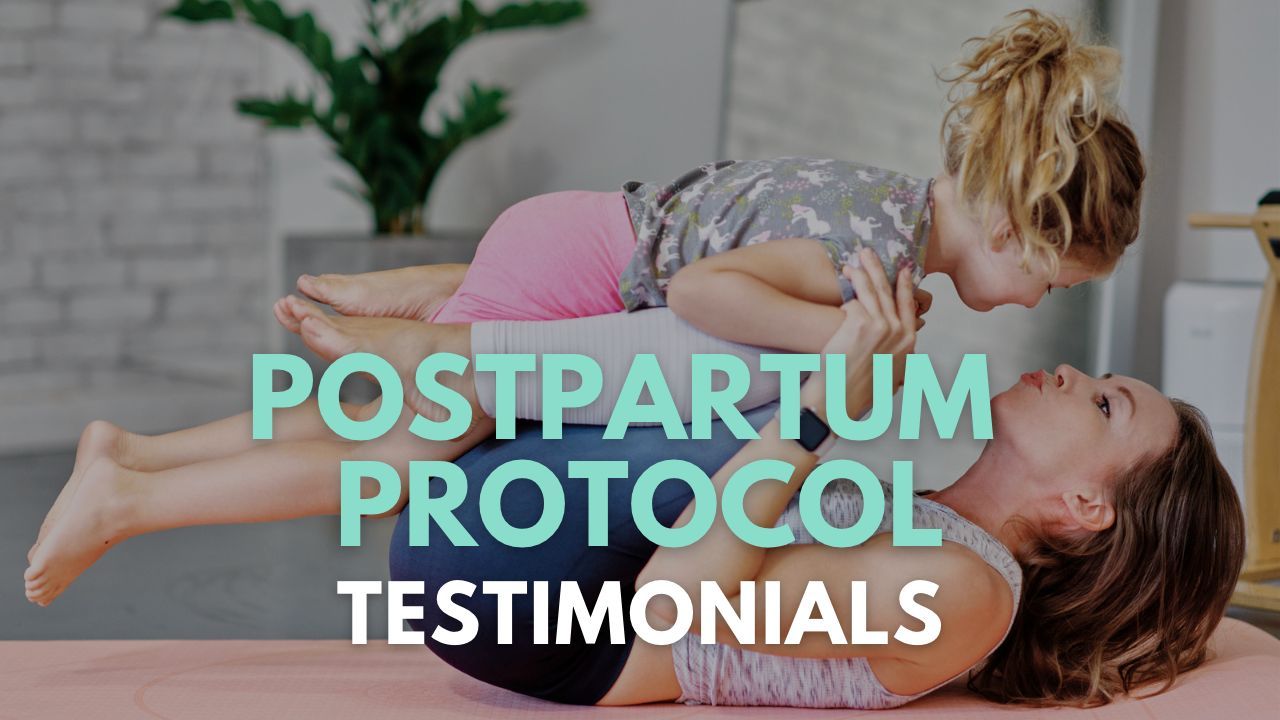
Have you been wondering whether the Postpartum Protocol 12 week course is worth the investment? Wondering whether you'll find the time to complete it? Wondering whether you'll notice a difference in your body..?
You will see lots of testimonials in the Stories highlights on my instagram stories, but if you're not on Instagram, here are some snapshots:

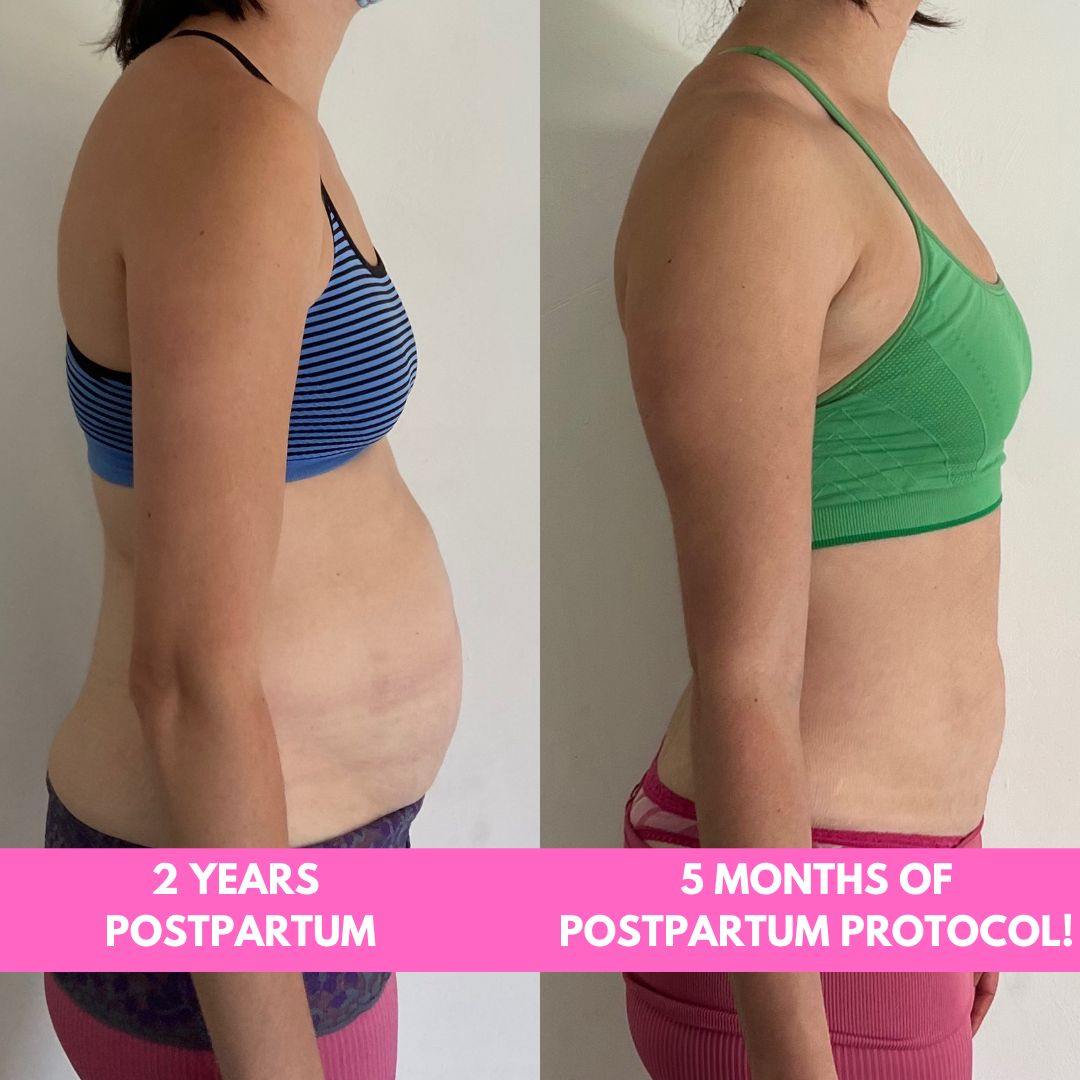




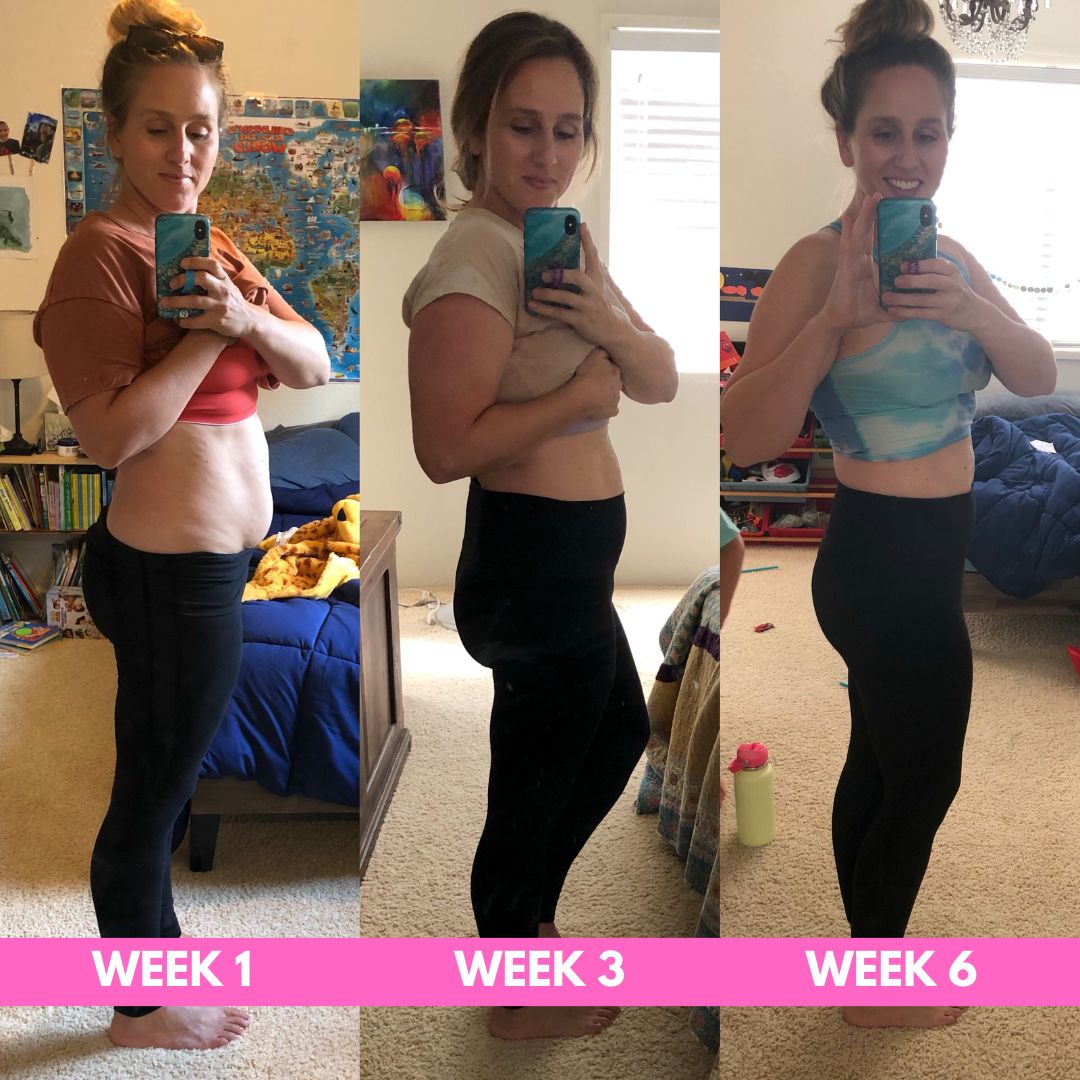

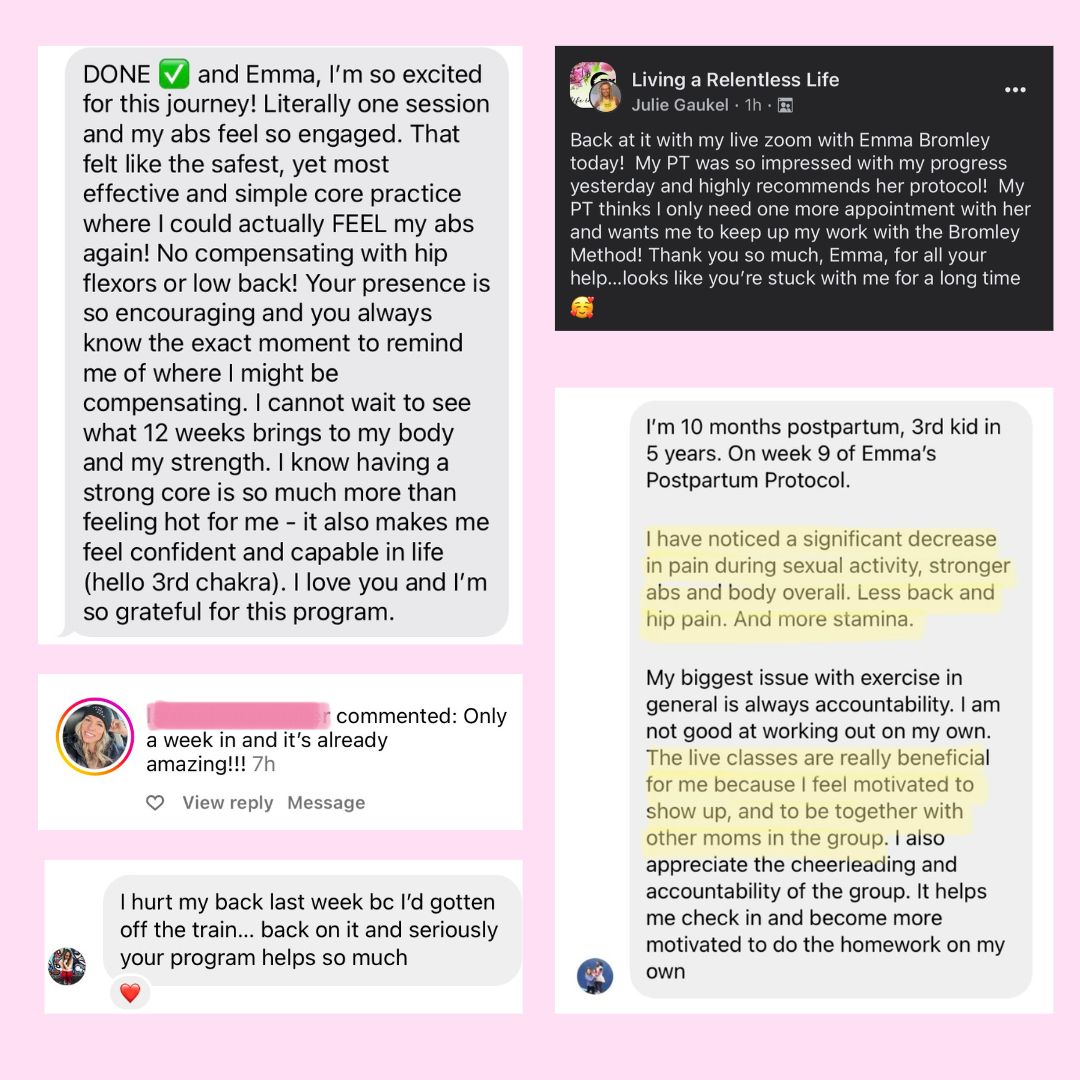
Want to experience these results for yourself..?
I would LOVE to have you join us! Click the link below to sign up
>> The Mama Method << (previously known as the Postpartum Protocol)
Emma xo
Why sit ups might be damaging your core

Have you ever noticed when you do sit-ups that your stomach turns into a funny shape? That’s because your core is like a pressure canister and instead of the pressure being managed correctly, everything is squishing out in all the wrong places: putting forward pressure on your abs (which will make a diastasis worse), and putting downward pressure on your pelvic floor (making prolapse and leaking worse), and not to mention making your back pain worse.
When I say sit ups, I’m referring to any core exercise where you lift your head and chest off the floor. So sit ups, crunches, the Pilates 100s, series of 5 etc.
If you ever notice weird shapes happening in your stomach like doming (looks like a stomach mohawk), or coning (looks like your abs are sinking), you should immediately back off. If this is happening, you won’t get a stronger core by “just doing more”. You won’t. I can promise you.
What needs to happen first, is that you need to teach your body how to manage this pres...
3 Core & Pelvic Floor Exercises That Are More Effective Than Crunches

Do you find that doing crunches, sit ups and planks just don’t give you the same results as when you were in your 20s? Or do your abs bulge or look strange when you try to do a sit up?
Think of the abdomen as being like a pressure canister. If when you crunch or do a sit up the pressure makes your lower abs bulge, then that pressure is also likely making your pelvic floor bulge as well.
This is bad because it can cause leaking, and even prolapse symptoms. So if you were thinking that leaking is “just a part of being a mom”, it’s not. It’s a pressure management issue.
There are plenty of ways in which you can strengthen your core that do not involve this high pressure situation. Which means that crunches are actually your least effective option at this point.
I’m assuming you’ve already done my free pelvic floor training to learn how to better manage this pressure (if you haven’t, the link is at the bottom).
Here are my 3 favorite ways to incorporate that technique into some ab ...
Do you experience knee pain when you squat?
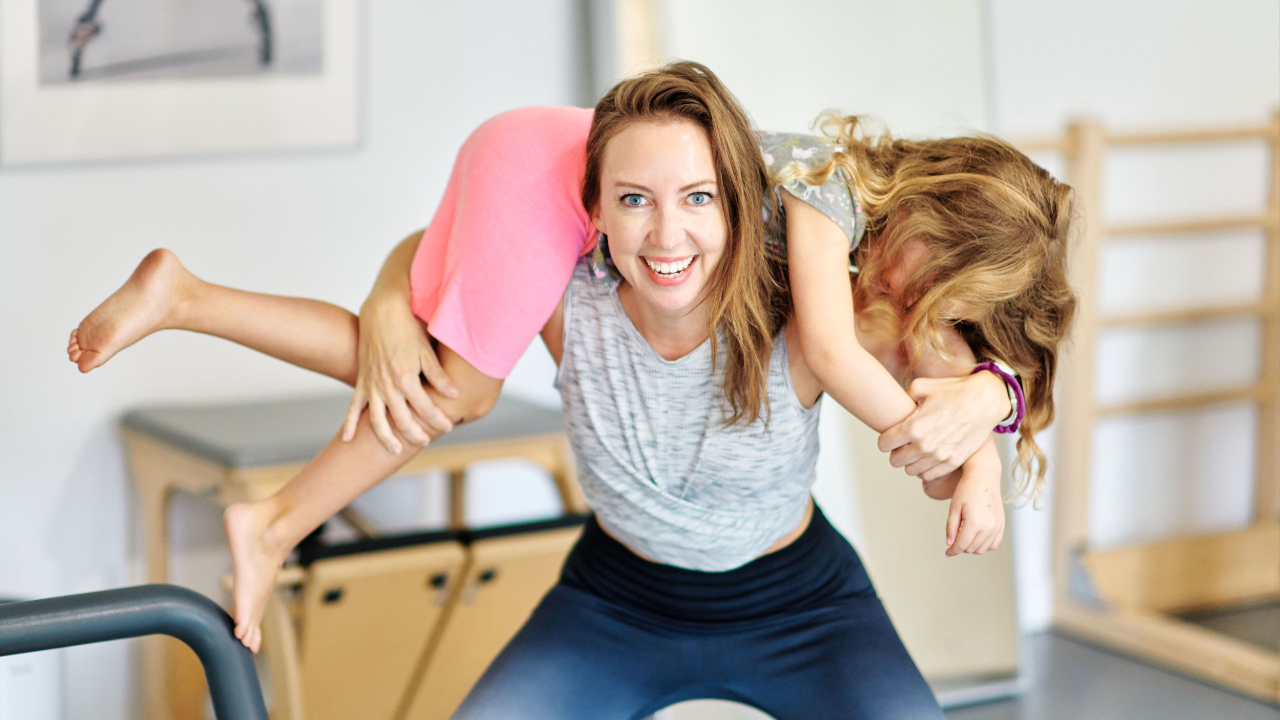
Do your knees hurt when you squat? This is one of the most common postpartum complaints I hear from mums besides core and pelvic floor issues.
First, let’s address why it happens in the first place:
During pregnancy, we carry a lot of extra weight in the front. When we carry or hold weight in the front of our body, it causes the front of our body to overwork. The quads (fronts of our thighs) get overused as we carry around this extra weight in the front, and as the quads become stronger, they start to take over, thus allowing the glutes to become weaker.
Have you ever heard the term “mom-butt”? Which refers to the saggy butt we experience as moms. This is why. So unless you were actively and intentionally training your glutes with weights during pregnancy, there is a high probability that your glutes are essentially turned off.
Squatting is a glute exercise. But when the glutes are very weak, we can lean too far forward when we squat, making it a quad exercise, thus exa...
The Pelvic Floor: Everything You Needed To Know Sooner!
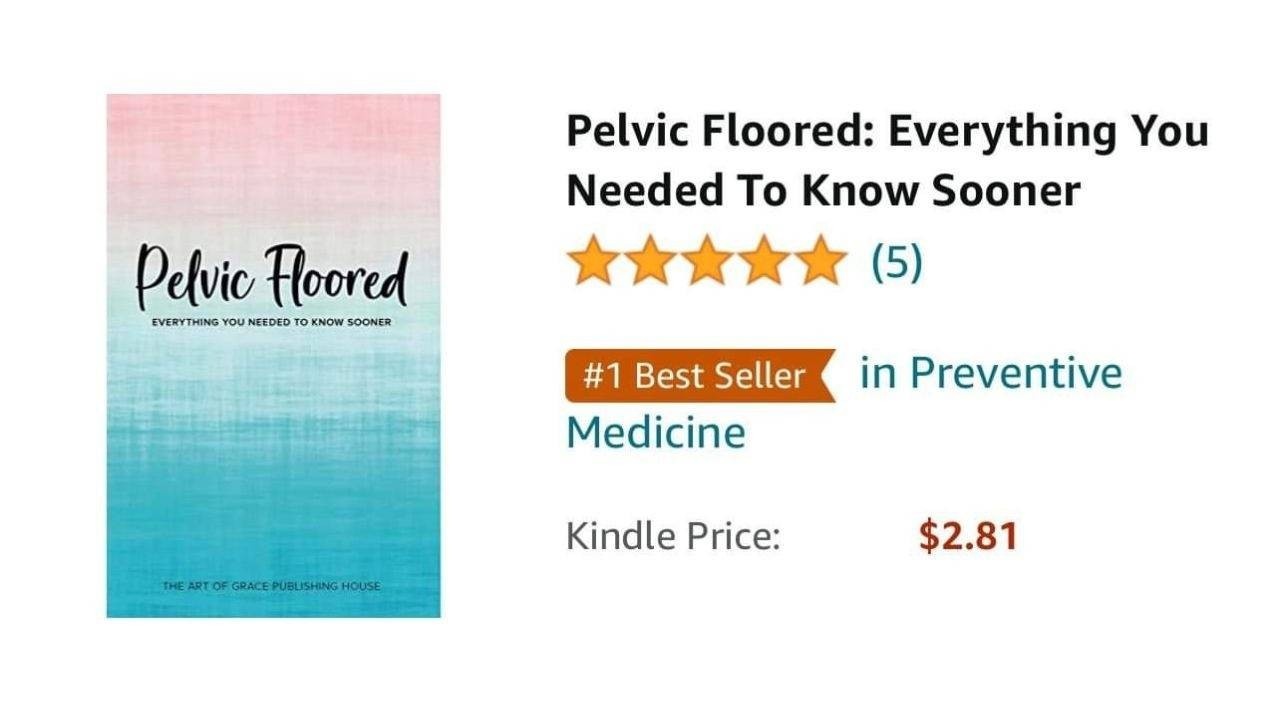
I was recently given the incredible opportunity and great privilege to collaborate with doctors, physical therapists and birth professionals in the kind of book that should be handed out in high schools and gynecologists offices. This book was a passion project like no other. All of the authors of this book had something unique to share. From personal stories, to anatomy lessons, to helpful tips and solutions to some of the most common postpartum symptoms.
But this book is not just for women. Men have a pelvic floor too. And many even suffer from Pelvic Floor Dysfunction (PFD) without even knowing it. Do you know a man who refers to his “dad belly”? That could very well be related to PFD. In women it’s affectionately referred to as the “mummy tummy”, the fupa, the mom pooch. We’re told “you’re a mom now. It’s part of the package”, but it simply isn’t true. We just have to have the knowledge of how to fix it.

This book covers so much exciting ground. From how the pelvic floor c...
What is a low pressure ab exercise and why i teach them when working to retrain & reconnect the core…

So we all know and love high pressure ab exercises (crunches etc), but what exactly is a low pressure ab exercise? Well, it’s pretty much any ab exercise where the spine stays in neutral, and it can have varying degrees of intensity. Here’s an example of a moderate low pressure ab exercise for you to try:
- Lie on your back and bring your legs into tabletop position.
- Lift your pelvic floor and wrap your transverse abs to a level 3 like we talked about above
- Bring your right hand and press it against your left knee and raise your left hand up towards the ceiling
- As you exhale, press your right hand and your left knee towards each other quite hard without changing the position of your spine or pelvis, whilst simultaneously reaching your left arm and right leg out straight to about 45 degrees from the ground (diagonal)
- As you inhale, bring it back in
- Think about diagonal energy coming across your core from your right ribs to your left hip and notice just how much core strength i...
Why i don’t teach kegels on their own any more...
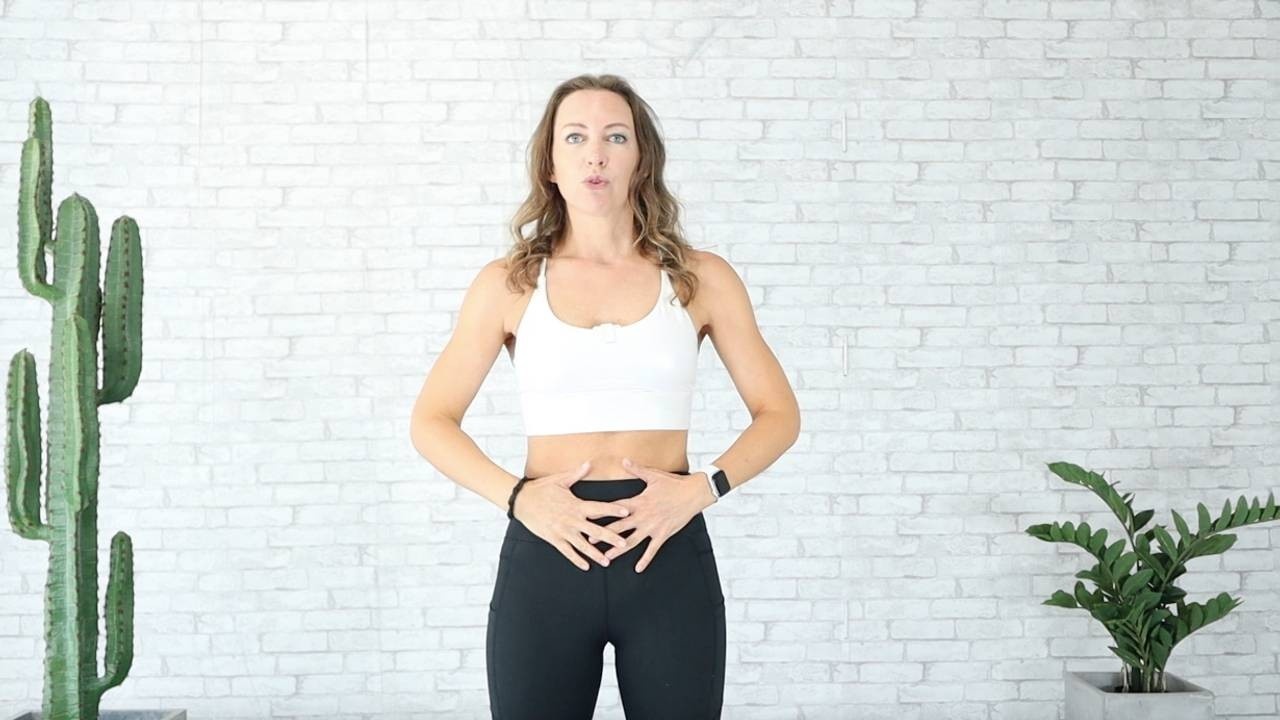
I used to teach kegels as a stand alone exercise, but in my lifelong ‘research paper’ on the pelvic floor, i have learnt that the pelvic floor was never designed to function/move on it’s own. It was designed to move in tandem with the diaphragm and it actually behaves and functions infinitely better that way.
If the pelvic floor is the baby hammock (see previous post), the diaphragm is the Mommy hammock that attaches to the bottom of your ribcage and expands and contracts as you inhale and exhale. These two muscles are meant to move together which is why the breathing (pelvic floor training) i teach incorporates BOTH rather than just the pelvic floor muscle (kegels).
The reason why this tandem movement of the two muscles moving as one is so important is because as you exhale, we want both the diaphragm AND the pelvic floor to lift. Now here’s the really important part… As you INHALE, we want both the diaphragm AND the pelvic floor to move down (i.e lengthen). Lengthening AND St...
Why is Pelvic Floor strength so important?

Think of the pelvic floor as a hammock that holds all of your internal organs in place. In women it also supports the uterus and it’s made up of ligaments, connective tissue and muscle that attaches to the inside of the pelvis.
A weakened pelvic floor can be the cause of all sorts of uncomfortable consequences ranging from leaking when you run, jump or laugh, to pelvic organ prolapse (you’d feel a heaviness or a bearing down sensation in your vagina). A strong pelvic floor on the other hand, is necessary for optimum sexual function.
There are several reasons why the pelvic floor can become weak, but I am just now learning about the impact of collagen and the effect it has not only on keeping the skin firm and fresh, but also on the muscles and keeping them resilient and strong, and that includes the pelvic floor. As we age, the body’s ability to produce and retain collagen diminishes, which is why us older mammas (wink) have to work much harder than the younger mammas to keep o...
Let's Make The Last 6 Weeks of 2020 Really Count! 💫
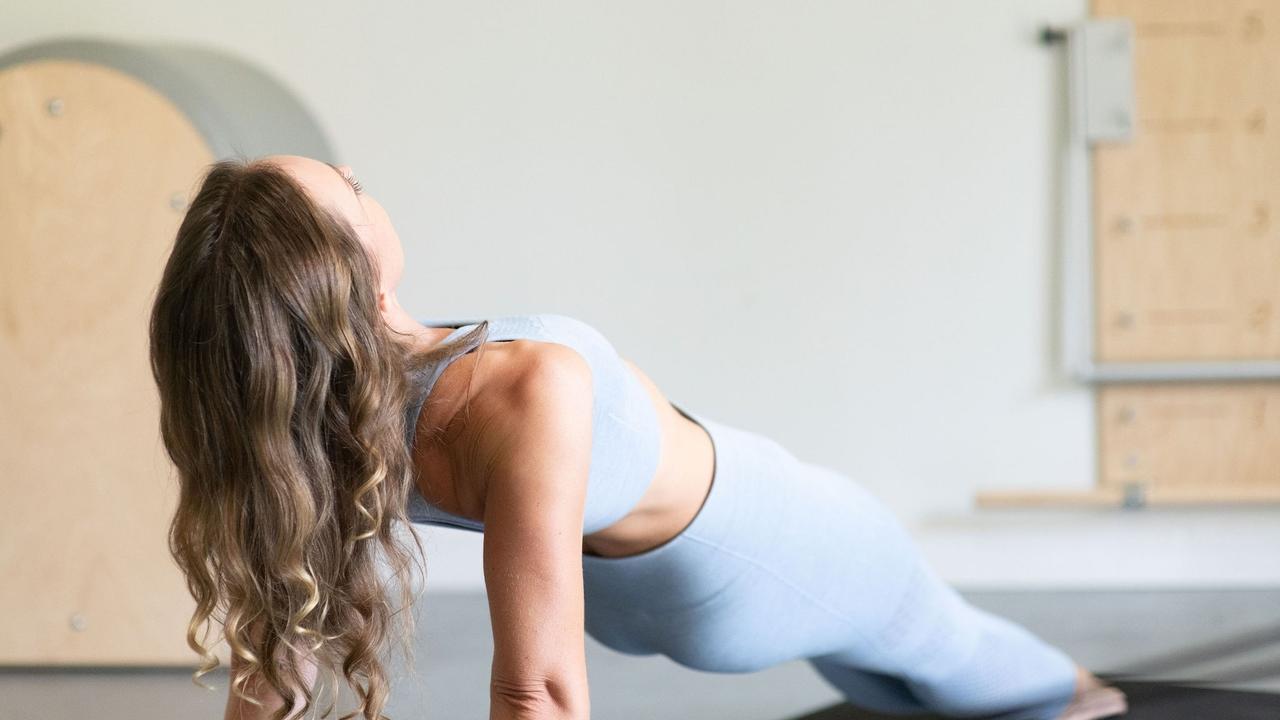
If you know me, you've probably heard me say before that it takes 4-6 weeks of consistent workouts to notice a significant change in the body. And just 72 hours before we start to loose some of that fabulous muscle tone we've worked so hard for.
Now don't let that discourage you. On the contrary. Personally I think that might be the most motivating thing I've ever heard!
And since there is just under 6 weeks left of 2020, it's the perfect amount of time to get a really good head start on our 2021 workout goals. Because why wait til January 1st when we can do it now?!
So unless you are injured or sick, you want to make sure that you don't ever leave 3 full days in between your workouts. Why? Because the body CRAVES movement. And because working out will make you feel AMAZING!
If you get your workouts in this week for no other reason than because it makes you feel amazing, then my work here is done my friends!
So let's get those workouts scheduled in!
My top tip for you this week ...

